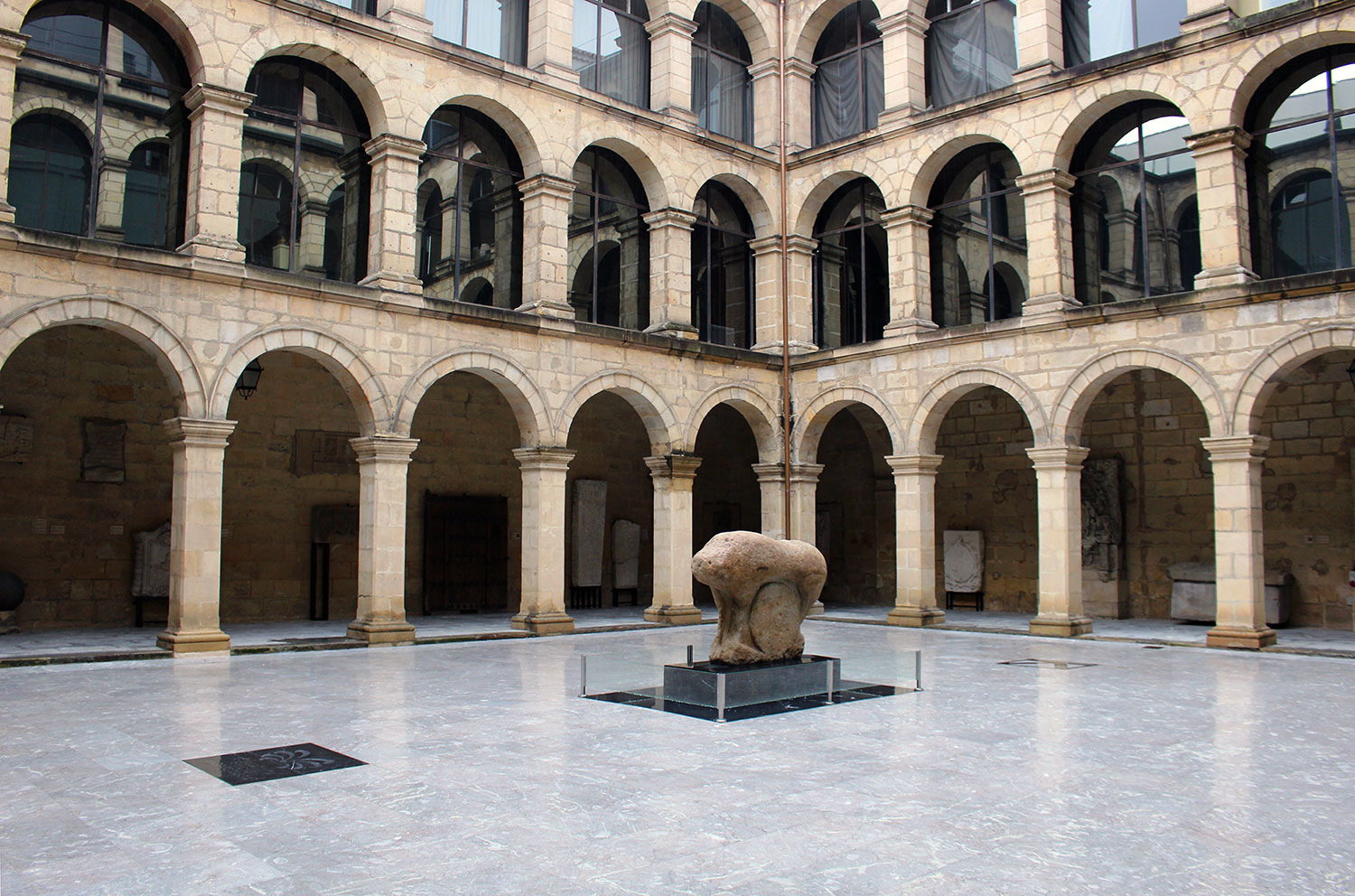LAN LASTERRA, LAN ALFERRA
LANA LANDA EREMUAN
Erosotasuna formalitateari gailentzen zitzaion eguneroko jantzian. Praktikoa eta iraunkorra izateko moduak bilatzen ziren, bai erabileran eta baita egikeran ere. Gona, esaterako, gerriraino igota erabiltzen zen batzuetan erosotasunaren mesedetan, azpiko gona agerian utziz. Keinu hau moralitatearen mugan zegoela erakusten digute garaiko bisitari batzuek egindako aipamenek eta erantzun gisa Estanislao Labayru apaizak emakumeen laneko jantzia “oso arina izanik ere zintzoa” zela azpimarratzeko zuen beharrak.
Orokorrean, lanerako erabilitako piezak izanik, konponketa ugari egin behar izaten zitzaizkien iraungo bazuten: adabakiak jarri, zuloak pasaratu, haurdunaldietara egokitzeko alozak askatu, etab. Urte luzetako bizitza izan ohi zuten.
Jantzi hau osatu zezaketen pieza guztiak bildu baditugu ere, beharrezkoa ez zen elementu oro baztertzen zen egunerokotasunetik. Urtaroek baldintzatzen zituzten piezen konbinazioak. Hotzarekin batera agertzen ziren jakak, tokilak edota feltrozko azpiko gonak, eta beroak berriz jantziak arintzen zituen.
Proposatutako ereduan, liho pieza zaharrak erabili dira atorra eta amantala egiteko. Bigarrenerako oihala indigoarekin tindatu da modu naturalean. Artilezkoak dira gona eta jaka, eta jipoi-gonauntza kotoizko oihalez eginda dago.
LAN LASTERRA, LAN ALFERRA
EL TRABAJO EN EL ÁMBITO RURAL
La comodidad se imponía a la formalidad en el vestuario diario. Se buscaba la manera de que fuera práctico y duradero, tanto en el uso como en las hechuras. La falda, por ejemplo, se utilizaba subida hasta la cintura en los trabajos que requerían comodidad, dejando la enagua a la vista. Los comentarios realizados al respecto por algunos visitantes y viajeros de la época nos muestran que este gesto estaba al borde de la moralidad, por lo que, como respuesta, el sacerdote Estanislao Labayru se vio obligado a subrayar que las mujeres “usan para el trabajo una vestimenta muy ligera pero honesta”.
En general, siendo piezas que se utilizaban para trabajar, tenían que ser objeto de numerosos arreglos para que pudieran durar: se ponían remiendos, se zurcían agujeros, se soltaban las lorzas para adaptarla a los embarazos, etc. Las piezas debían durar años.
Aunque hemos reunido todas las piezas que podían conformar este vestuario, debemos señalar que todo elemento que no resultaba necesario se apartaba del uso diario. Las estaciones condicionaban las combinaciones de las piezas. Las chaquetas, toquillas o faldas bajas de fieltro aparecían con el frío, y el calor, en cambio, aligeraba las prendas.
En el modelo propuesto, se han utilizado antiguas piezas de lino para elaborar la camisa y el delantal. Para el segundo, la tela se ha teñido de manera natural con índigo. La falda y la chaqueta son de lana, y el jubón-corpiño de mujer está elaborado con tela de algodón.
FAST WORK, POOR FINISH
WORK IN RURAL AREAS
Comfort prevailed over formality in day-to-day clothing. The aim was to make it practical and durable, in terms of both use and workmanship. The skirt, for example, was worn hiked up to the waist for the sake of comfort, leaving the petticoat visible. The notes and comments made on the subject by some visitors and travellers of the time show us that this gesture lay on the outer limits of morality, and in response to this, the priest Estanislao Labayru was obliged to stress that the women's work clothes "although very light, were also honest".
In general, being garments that were used for work, they had to undergo numerous alterations to make them last: they were patched, holes were darned, pleats were loosened to adapt them to pregnancy, etc. They tended to have a lifespan of many years.
Although we have gathered all the garments that may have made up this wardrobe, we must point out that any element that was not necessary was removed from day-to-day use. The seasons dictated the combinations of garments. Felt jackets, shawls or felt underskirts appeared with the cold, and warm weather, meanwhile, brought about lighter garments.
In the model put forward, old pieces of linen have been used to make the shirt and apron. The skirt and jacket are made of wool, and the women's doublet is made of cotton fabric.
VITE FAIT, MAL FAIT
LE TRAVAIL EN MILIEU RURAL
Dans les vêtements quotidiens, la commodité primait sur le protocole. On cherchait à ce qu’ils soient pratiques et durables, dans l’utilisation comme dans la confection. La jupe par exemple, était portée remontée à la taille pour plus de commodité, laissant visible le jupon. Les notes et commentaires réalisés à ce sujet par certains visiteurs et voyageurs de l’époque nous montrent que ce geste frisait l’indécence, obligeant le prêtre Estanislao Labayru à souligner que les vêtements de travail des femmes « bien que légers étaient également honorables ».
En général, parce que ces pièces étaient destinées au travail, elles faisaient l’objet de nombreux raccommodages pour durer plus longtemps : on rapiéçait, on reprisait les trous, on relâchait les plis pour les adapter aux grossesses, etc. prolongeant ainsi de plusieurs années leur durée de vie.
Bien que nous ayons réuni ici toutes les pièces qui pouvaient composer cette tenue vestimentaire, nous tenons à préciser que tout élément qui n’était pas jugé nécessaire était éliminé de l’usage quotidien. Les saisons conditionnaient les combinaisons des pièces. Les vestes, écharpes ou sous-jupes en feutre apparaissaient avec le froid, alors que la chaleur, au contraire, allégeait la tenue.
Dans le modèle proposé, nous avons utilisé d’anciennes pièces de lin pour élaborer la chemise et le tablier. La jupe et la veste sont en laine, et le pourpoint de femme en toile de coton.

